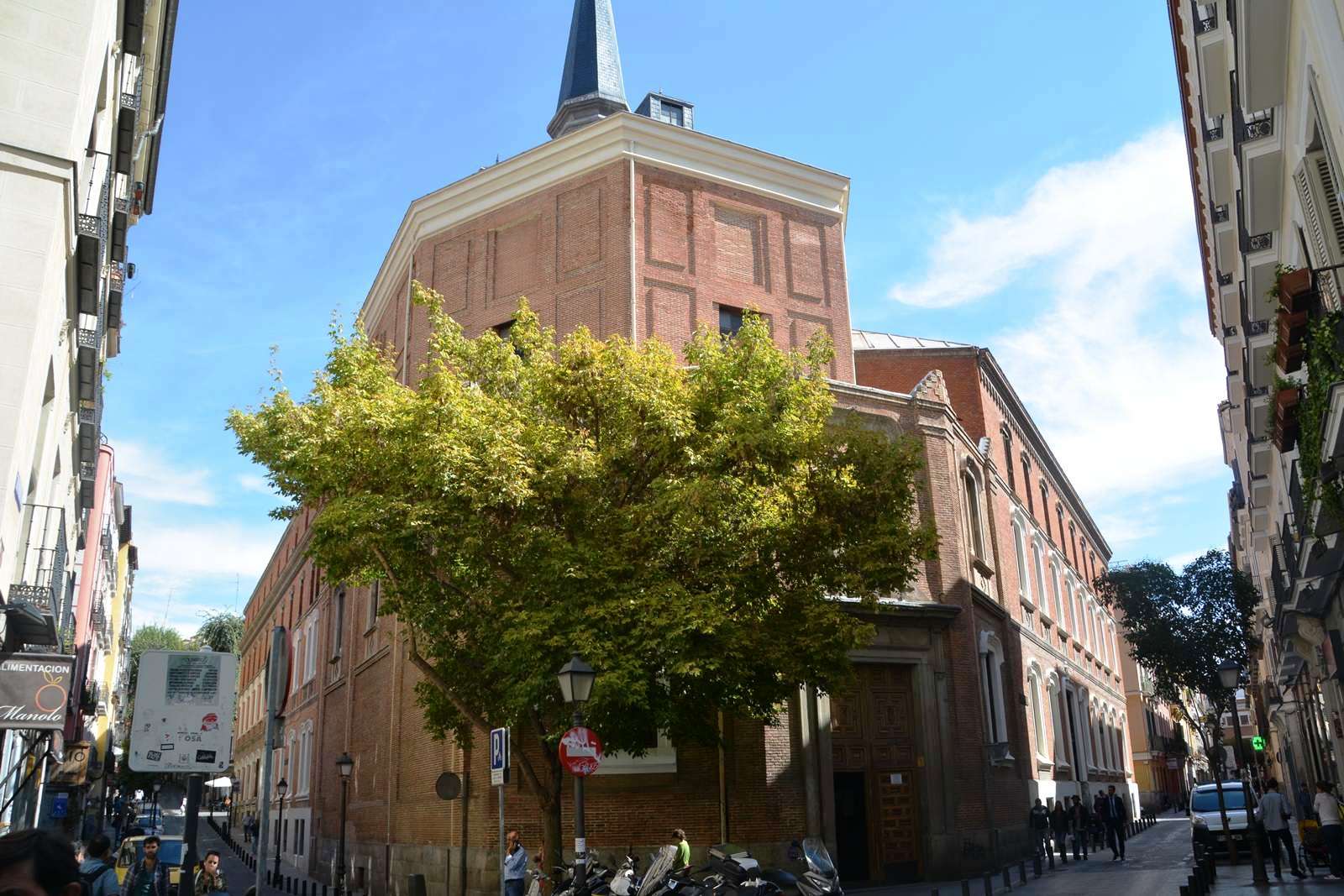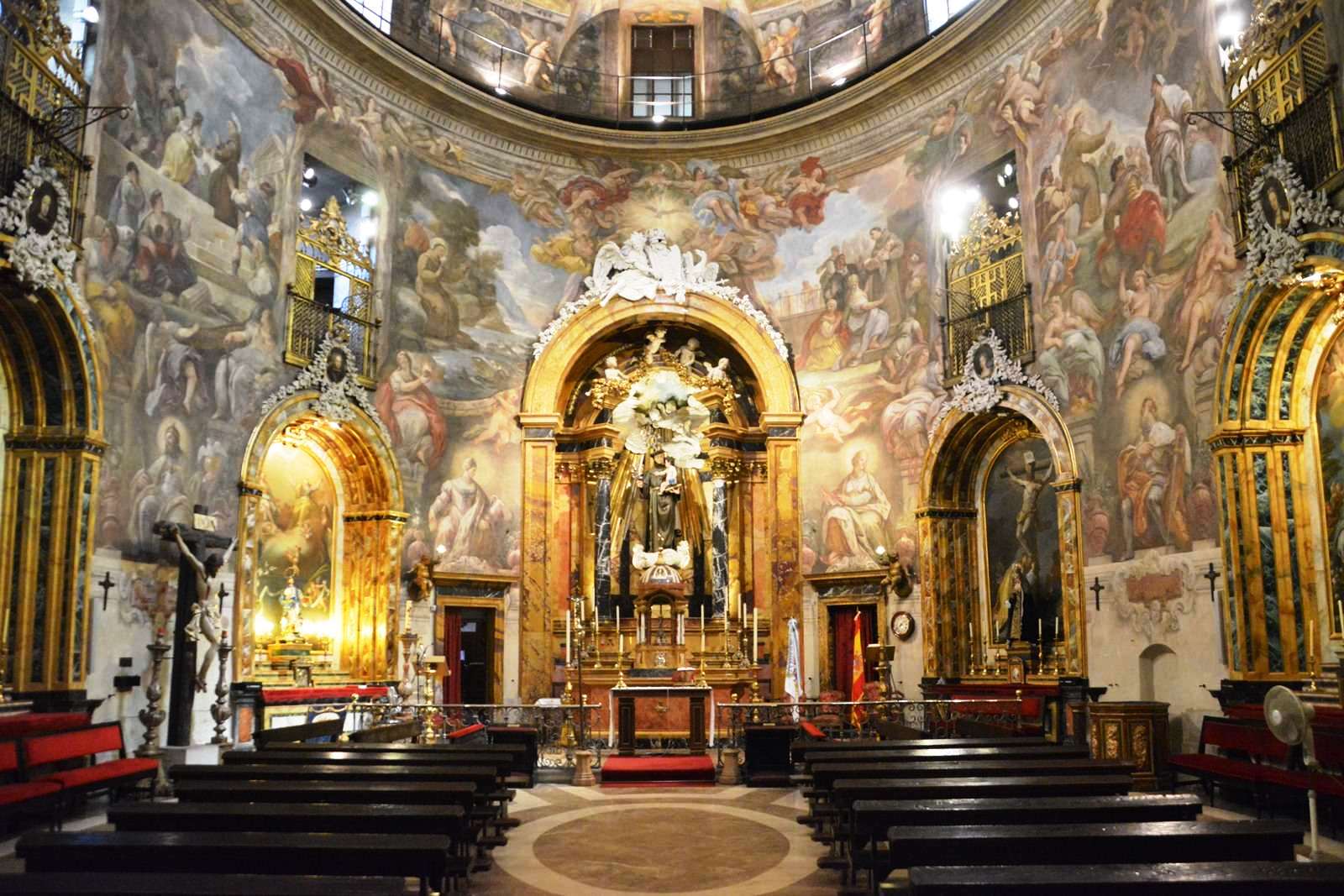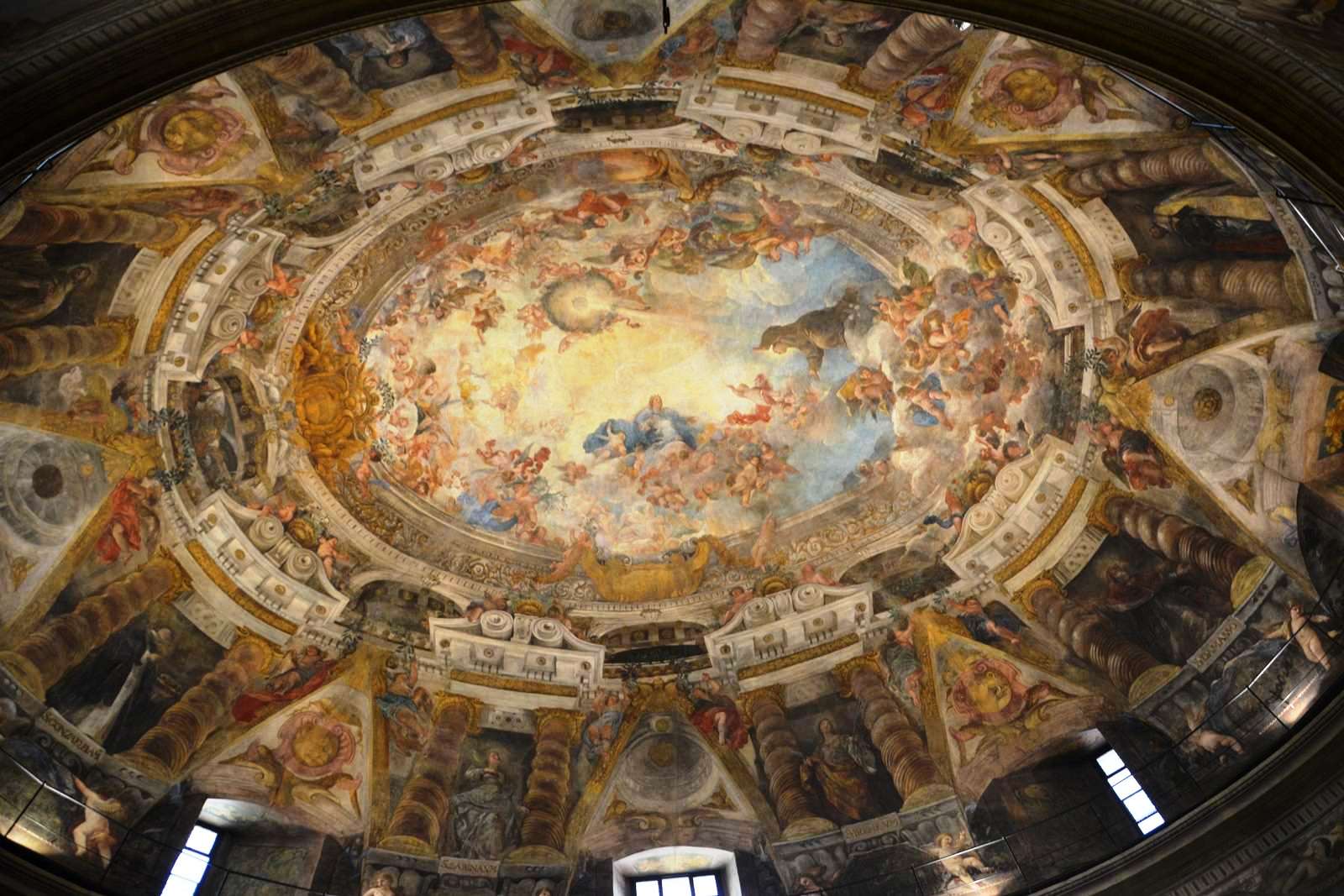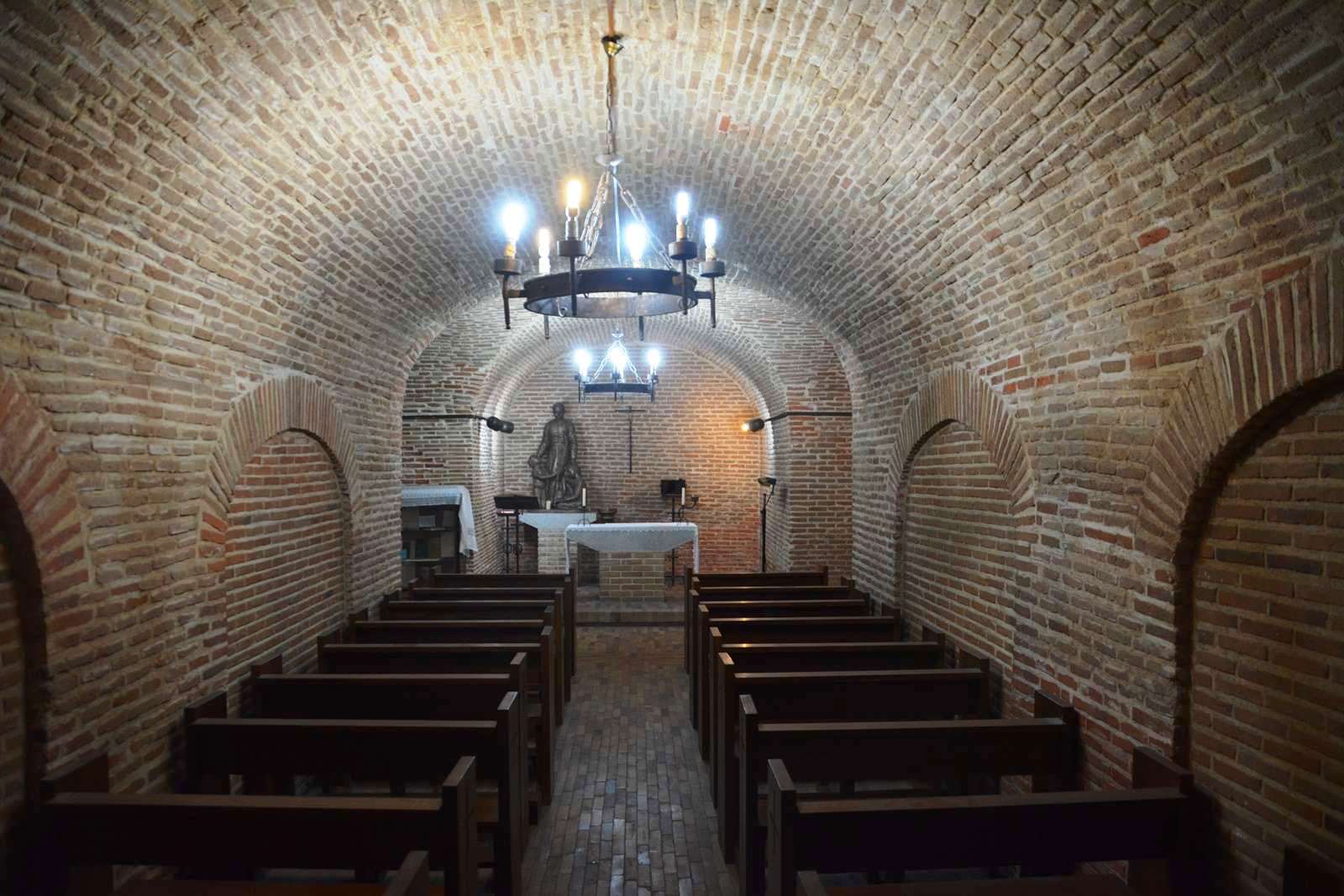
Unassuming from the outside, this small building goes practically unnoticed to most people who walk down Gran Via in Madrid. Yet right behind this important artery, there is a church whose austere façade reveals no clue as to the spectacularly breathtaking interior.
Inside the church, the domed ceiling and the walls are richly decorated with frescoes, which have led it to be referred to as “the Sistine Chapel of Madrid.” The elaborate frescoes depict the life and miracles of St. Anthony of Padua.


Built-in the 17th century, this church initially served as a hospital for Portuguese citizens who came to Madrid while Portugal was under Spanish rule. After Portuguese independence, it was dedicated to German pilgrims and its name was changed to the current name, Iglesia de San Antonio de los Alemanes (Church of Saint Anthony of the Germans).
Around 1660, the church’s dome began to be painted according to sketches by the Italian artists Coloma and Mitelli. The frescoes were started two years later, painted by Carreño de Miranda and Francisco de Rizzi, commissioned by King Philip IV of Spain.
A fresco of St. Anthony of Padua, a Franciscan born in Lisbon in 1195, occupies the most important place in the dome. He is depicted kneeling on a cloud receiving the Child Jesus and Virgin Mary with open arms. The different miracles of the saint are represented along the entire upper level of the church, while several sainted kings from history are represented below them.

Under the church, there is a curious crypt with several niches that house corpses of the Spanish royal family, some dating back to the Middle Ages. Nearby there are more niches, where children and some unknown bodies were laid to rest.
The opening hours to visit the church are from Monday to Saturday from 10:30 a.m. to 2:00 p.m. Evenings and Sundays are dedicated to worship. Exceptionally, it may remain closed on certain dates.
A donation of €2 per person is requested to attend to the social purposes of the Brotherhood.